Project 2: Local Feature Matching
For project 2, I worked to implement Harris Corner Detection, Sift Feature Matching, and the Nearest Neighbor Distance Ratio test to match collected features. The basic algorithm ran in the following fashion.
- Find pertinent interest points using the Harris Corner Detection. We then want to supress the points to return the maximum value in a given region.
- Create feature elements around the interest points using the SIFT histogram design. Features are composite histograms of smaller, internal cells. These histograms are then stored in a features array.
- Two sets of features are passed into the match_features function, which compares the points and used Euclidean distances to identify corresponding points from the two sets of features. The NNDR is then calculated to cull that list to a thresholded group of most accurate matches.
Results
However, despite my attempted implementation, my feature detection project did not return a substantial accuracy to merit full credit. While using cheat_interest_points, my accuracy was as high a 27 percent, but then dropped to around 2% when get_interest_points was added. This leads me to believe that a substantial bug was present in either my get_features function or get_interest_points function.
SIFT Feature Creation
Below is the part of my get_features function that I believe is faulty, and I intend to still try and understand where my interpretation and implementation failed.
%example code
while j <= feature_width && k <= feature_width
cell_Matrix = feature_Matrix(j:j + (cell_width - 1), ...
k:k + (cell_width - 1));
%Gmag, Gdir are both matrices
[Gmag, Gdir] = imgradient(cell_Matrix);
hValue = zeros(1, 8);
for n = 1:cell_width
for m = 1:cell_width
curDirection = Gdir(n, m);
curMagnitude = Gmag(n, m);
if (-180 < curDirection <= -135)
hValue(1) = hValue(1) + curMagnitude;
elseif (-135 < curDirection && curDirection <= -90)
hValue(2) = hValue(2) + curMagnitude;
elseif (-90 < curDirection && curDirection <= -45)
hValue(3) = hValue(3) + curMagnitude;
elseif (-45 < curDirection && curDirection <= 0)
hValue(4) = hValue(4) + curMagnitude;
elseif (0 < curDirection && curDirection <= 45)
hValue(5) = hValue(5) + curMagnitude;
elseif (45 < curDirection && curDirection <= 90)
hValue(6) = hValue(6) + curMagnitude;
elseif (90 < curDirection && curDirection <= 135)
hValue(7) = hValue(7) + curMagnitude;
elseif (135 < curDirection && curDirection <= 180)
hValue(8) = hValue(8) + curMagnitude;
end
end
end
hValue = hValue ./ feature_width;
histogram_Matrix = [histogram_Matrix, hValue];
%histSz = size(histogram_Matrix)
if (j == feature_width + 4)
k = k + 4;
j = 1;
else
j = j + 4;
end
end
Results in a table
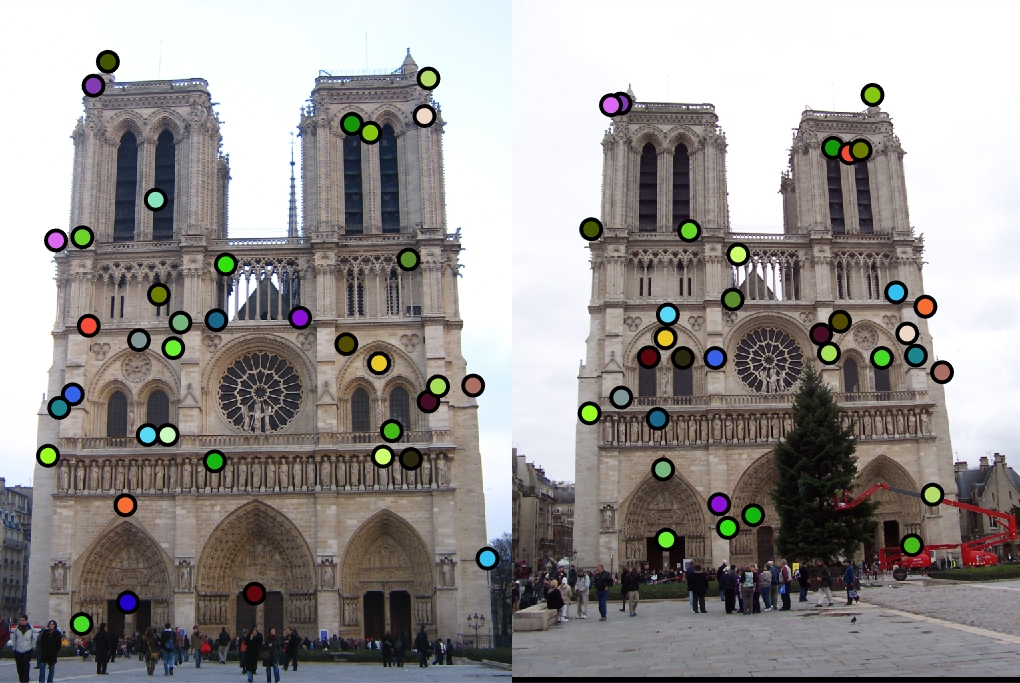
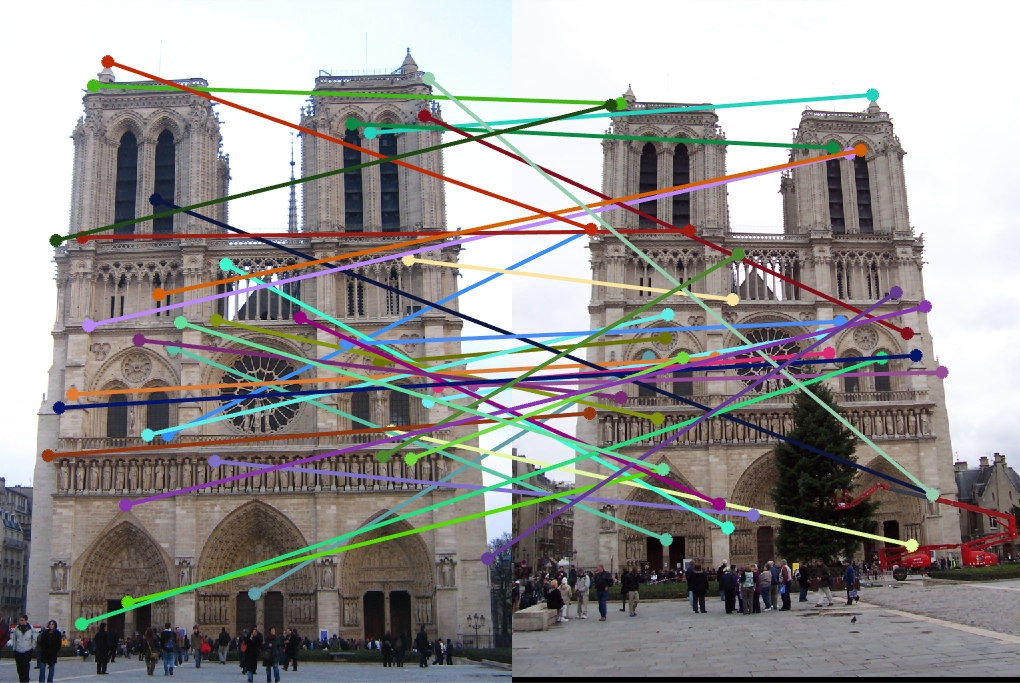
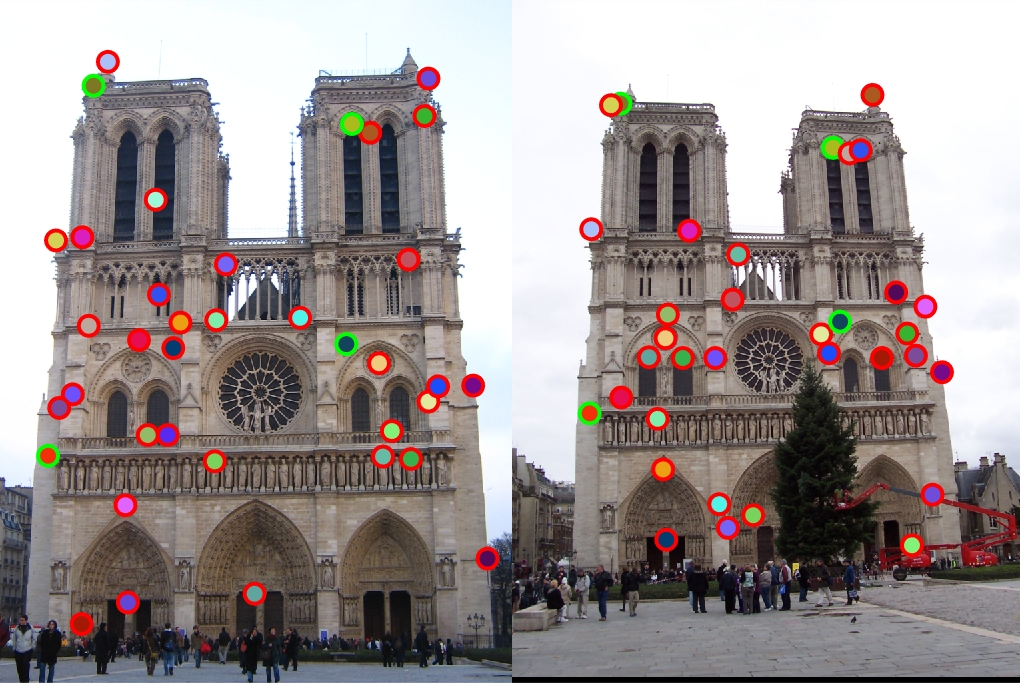
|
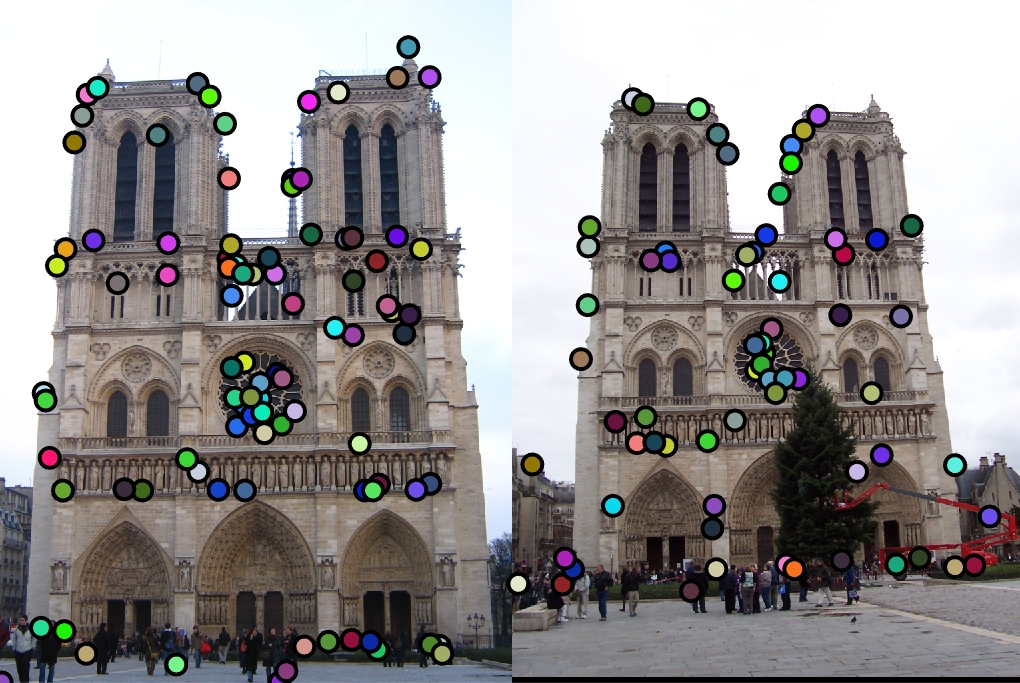
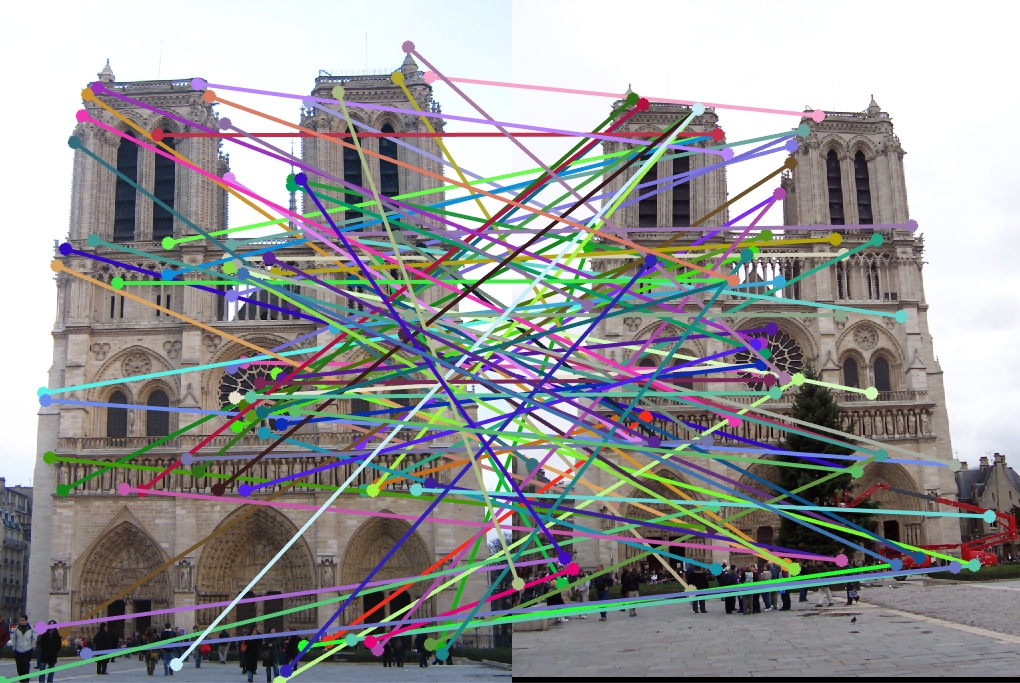

|
Above are the pictures from the Notre Dame test case. The top row is using cheat_interest_points and the bottom is using get_interest_points.